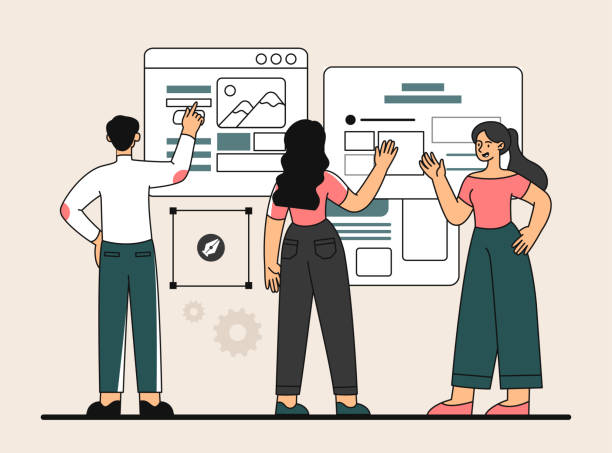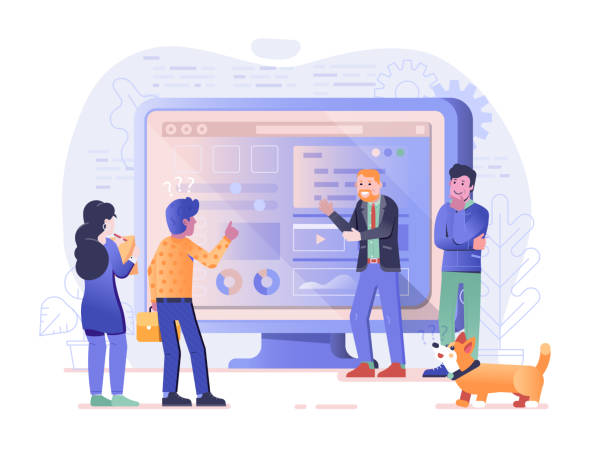Introduction to the Importance of User-Friendly Website Design

In today’s digital world, where competition for user attention has become more intense than ever, user-friendly website design is no longer considered an advantage, but an undeniable necessity.
This concept goes beyond visual aesthetics and page layout; its main goal is to ensure that every visitor can easily and without any problem find the information they need, interact with the website, and achieve their goals.
A website with a weak #UI can lead to high bounce rates, reduced conversions, and ultimately the loss of potential customers.
In contrast, a website designed based on #user_experience and usability principles not only keeps visitors satisfied but also converts them into loyal customers.
The importance of this issue is such that successful companies and businesses allocate a significant portion of their resources to improving user experience.
Did you know that poor online store design can drive away up to 70% of your potential customers? Rasawap transforms your sales with professional and user-friendly e-commerce website design.
✅ Significant increase in sales and revenue
✅ Full optimization for search engines and mobile
⚡ [Get free consultation from Rasawap]
Key Principles in Successful User Experience Design
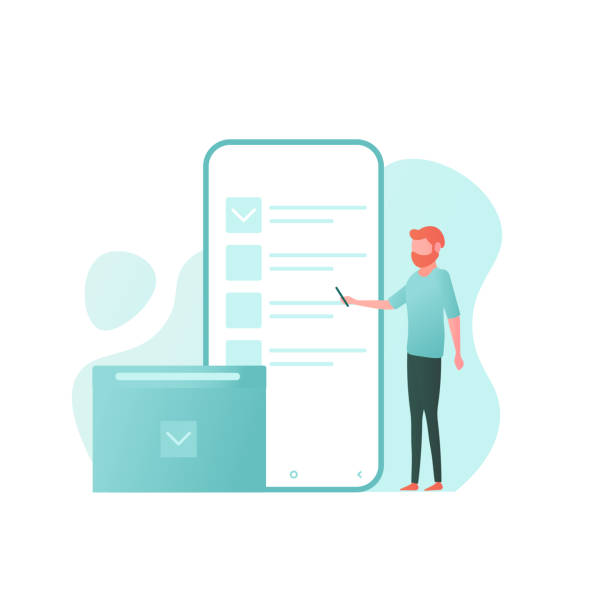
To achieve a user-friendly website design, one must adhere to a set of principles and rules.
These principles include simplicity, consistency, accessibility, compatibility, and appropriate user feedback.
Simplicity means removing unnecessary and complex elements that can confuse the user; the simpler the user interface, the easier it will be to learn and use.
Visual and functional consistency across all website pages conveys a sense of trust and professionalism.
Accessibility ensures that the website is usable for all individuals, including users with disabilities.
Compatibility means that the website’s design patterns and behavior should align with users’ prior expectations.
Finally, providing appropriate feedback to the user when interacting with the website (e.g., a successful form submission message or an error message) assures them that their action has been registered.
Adhering to these principles forms the foundation of a strong user experience and is considered an educational approach for every web designer.
User Research and Its Role in Design

One of the critical steps in the process of user-friendly website design is conducting comprehensive user research.
Without a deep understanding of the target users’ needs, behaviors, and challenges, website design will be like building a house without knowing the needs of its inhabitants.
User research includes various methods such as interviews, surveys, statistical data analysis, usability testing, and persona creation.
Personas are fictional characters, yet based on real data, that represent the characteristics, goals, and pain points of primary users.
By creating personas, the design team can always keep users in mind and make design decisions based on their real needs.
This approach not only minimizes design errors but also ensures that the final product is truly useful and valuable to users.
Have you ever thought about how one could design a website that truly meets user needs without understanding them? This is a specialized and thought-provoking content that highlights the importance of research.
Table 1: Main User Research Methods in Web Design
| Research Method | Description | Advantages | Disadvantages |
|---|---|---|---|
| User Interviews | Direct conversation with users to understand their needs and opinions | Gaining deep and qualitative insights | Time-consuming, small sample, requires interviewing skills |
| Surveys | Collecting data from a large number of users through a standardized questionnaire | Quantitative data, scalable, statistically analyzable | Lack of sufficient depth, varying quality of responses, potential for bias |
| Usability Testing | Observing users while interacting with the website to identify usability issues | Identifying usability issues in practice, direct insights into behavior | Requires a facilitator, time-consuming, small sample |
| Data Analysis (Analytics) | Examining visitor statistics, bounce rate, user journey, and interactions on the website | Accurate and quantitative data, insights into real behavior, scalable | Requires tools and analytical knowledge, does not provide the “why” of behavior |
Information Architecture and Seamless Navigation

Information architecture and navigation system are the backbone of any user-friendly website design.
Information architecture deals with organizing and labeling content in such a way that users can easily find what they are looking for.
This includes logical categorization, clear hierarchy, and the use of understandable language.
An efficient navigation structure guides users through menus, internal links, and search bars towards their desired information.
Confusing menus, broken links, or irrelevant content can quickly discourage users and lead them to leave the website.
Navigation design should be intuitive and predictable; meaning the user should be able to find their way around the website without much thought.
This part of the design not only affects the user experience but also significantly impacts website SEO, as search engines also use this structure to crawl and index content.
This explanatory guide reveals the importance of content organization.
Tired of your e-commerce website not generating as much revenue as it could? Rasawap, specializing in professional e-commerce website design, solves this problem permanently!
✅ Increased sales rate and revenue
✅ High loading speed and unparalleled user experience
⚡ Get free e-commerce website design consultation
The Importance of Visual Design and User Experience (UX) Hand in Hand
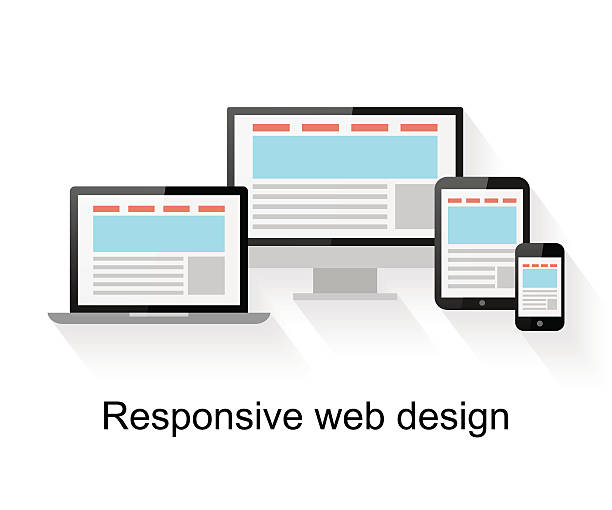
In user-friendly website design, visual design and user experience (UX) are two sides of the same coin that must work in harmony.
Visual design deals with the look and feel of the website; including colors, typography, images, and overall layout.
These elements can convey a sense of trust, professionalism, or even entertainment to the user.
An attractive visual design encourages users to stay and explore the website further.
On the other hand, user experience (UX) deals with functional and interactive aspects; how easy and enjoyable the website is to use.
Although a beautiful appearance is important, a beautiful website that is difficult to use quickly frustrates the user.
Therefore, successful designers focus on the balance between aesthetics and usability.
Every visual element should have a purpose in improving user experience and preventing confusion.
For example, proper use of whitespace can significantly increase content readability and relieve users from information overload. This analytical instruction demonstrates the importance of coordinating these two aspects.
Responsiveness and Mobile-First Approach
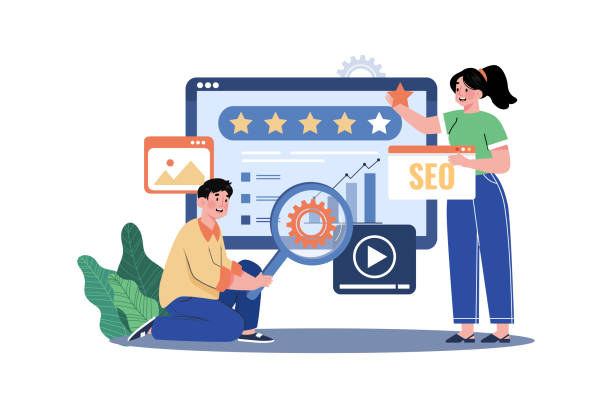
Given the increasing use of mobile devices for internet access, website responsiveness is a fundamental principle in user-friendly website design.
A responsive design means that your website automatically adjusts its layout and content to the screen size of the user’s device, whether it’s a desktop computer, a tablet, or a smartphone.
The “mobile-first” approach goes a step further; in this method, website design begins with the smallest screens (mobile) and then gradually expands for larger screens.
This approach ensures that the most important content and functionalities are prioritized and that the user experience on mobile devices is optimized.
Ignoring responsive design can lead to losing a large portion of the audience and a drop in search engine rankings, as Google also pays special attention to the mobile compatibility of websites for ranking.
This is a specialized content for web designers.
Performance Optimization and Loading Speed
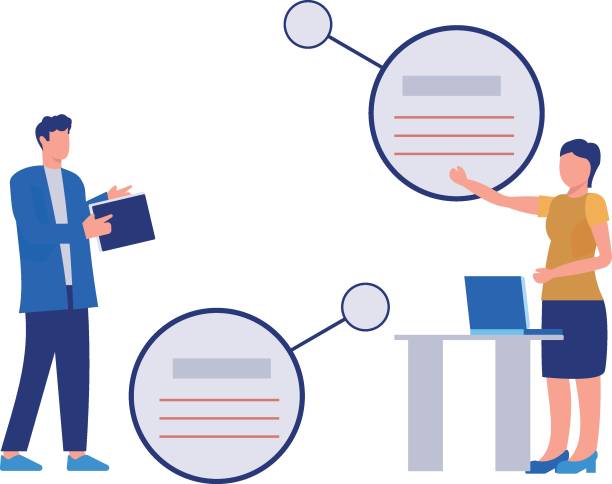
Website loading speed is one of the crucial factors in user-friendly website design that is often overlooked.
Even a website with outstanding visual design and excellent navigation will lose users if its loading is slow.
Research shows that most users expect a website to load in less than 2 to 3 seconds, and if not, they abandon the page.
Several factors affect loading speed, including image size, unoptimized JavaScript and CSS codes, inappropriate web hosting, and the lack of CDN (Content Delivery Network) usage.
Optimizing images, compressing codes, and choosing a powerful host can significantly increase your site’s speed.
This improvement not only enhances user experience but is also very important for SEO, as search engines prefer fast websites.
Did you know that every second of loading delay can mean millions of dollars in losses for large businesses? This news-worthy and thought-provoking content highlights the importance of speed.
Table 2: Factors Affecting Website Loading Speed and Solutions
| Influencing Factor | Description | Optimization Solution |
|---|---|---|
| Image Size | Large and uncompressed images increase download time. | Image compression, use of next-gen formats (WebP), lazy loading |
| CSS and JavaScript Files | Large and numerous files impose multiple HTTP requests on the server. | Minification, combining files, asynchronous loading (async/defer) |
| Web Hosting | Slow servers or limited resources increase server response time. | Choosing quality and high-speed hosting, using dedicated/VPS servers |
| Browser Caching | Failure to store static files in the user’s browser, requiring re-download every time. | Activating browser caching for static resources, setting appropriate expiration dates |
Accessibility for All Users
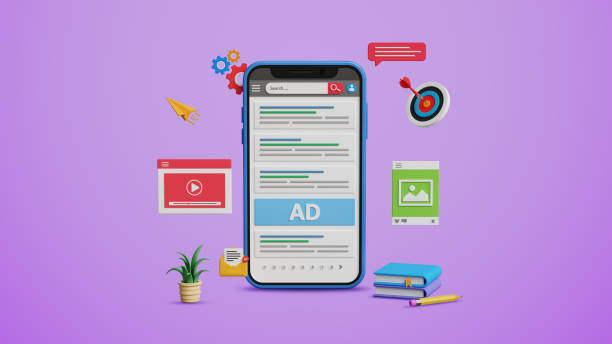
A fundamental and ethical aspect of user-friendly website design is ensuring the website’s accessibility for all individuals, including those with disabilities.
This includes individuals with visual, auditory, motor, or cognitive impairments.
Accessible design not only means adhering to legal standards (such as WCAG) but also reflects a commitment to inclusivity and respect for all users.
Using alt text for images, captions for videos, keyboard navigation, and appropriate color contrast are just some of the actions that can be taken to increase accessibility.
Ignoring this aspect can not only lead to losing a large portion of users but also harm your brand’s reputation.
A website that is usable for everyone is not only more ethical but also gains a wider user base, and naturally, a highly accessible website often has cleaner code structure and better SEO. This explanatory analysis articulates the importance of inclusivity.
Tired of your company’s website not meeting your expectations? With Rasawap, design a professional website that showcases the true face of your business.
✅ Increased attraction of new customers and sales leads
✅ Increased credibility and trust of your brand among the audience
⚡ Get a free website design consultation!
Continuous Testing and Optimization
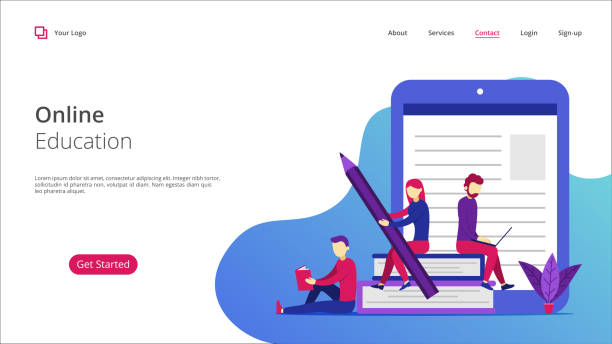
The process of user-friendly website design is not a one-time project, but a continuous cycle of testing, feedback, and optimization.
Even after launching the website, it is necessary to regularly test it and collect user feedback.
A/B tests, heatmaps, on-site surveys, and user testing sessions are tools that can uncover hidden problems and indicate opportunities for improvement.
Website data analysis (such as Google Analytics) also provides valuable insights into user behavior.
Based on this data and feedback, small changes can be implemented and their effects re-evaluated.
This iterative design approach ensures that the website always keeps pace with user needs and expectations and continuously improves.
Are you ready to turn your website into a living laboratory for improving user experience? This specialized guidance is vital for maintaining website quality.
The Future of User-Friendly Website Design
![]()
The future of user-friendly website design is rapidly changing and evolving.
Technologies like artificial intelligence, machine learning, Voice UI, and augmented reality (AR) are reshaping how we interact with websites.
Personalizing content based on user interests and past behaviors, anticipating their needs, and providing richer interactive experiences are among future trends.
Furthermore, focusing on emotional design and creating an emotional connection with the user will gain more importance.
Web designers must constantly learn and update their knowledge to keep pace with these changes and create websites that are not only functional but also provide an unforgettable experience for visitors.
This path is full of challenges and excitement, but its reward will be user loyalty and business success.
This entertaining and analytical section looks into the future.
FAQ
And other services of Rasawap Advertising Agency in the field of advertising
Smart Google Ads: Transform user interaction with smart data analysis.
Smart Marketplace: A dedicated service for online growth based on SEO content strategy.
Smart Social Media: A professional solution for customer acquisition focusing on precise audience targeting.
Smart Link Building: A combination of creativity and technology to increase click-through rates through custom programming.
Smart Conversion Rate Optimization: Designed for businesses seeking online growth through user experience customization.
And over a hundred other services in internet advertising, advertising consultation, and organizational solutions
Internet Advertising | Advertising Strategy | Advertorials
Resources
Principles of User ExperienceUser-Friendly Website DesignUX Design GuideModern User Experience
? For a powerful online presence and visibility for your business, Rasawap Afarin is by your side, offering comprehensive digital marketing services, including professional WordPress website design.
📍 Tehran, Mirdamad Street, next to Bank Markazi, Southern Kazeroon Alley, Ramin Alley, No. 6

